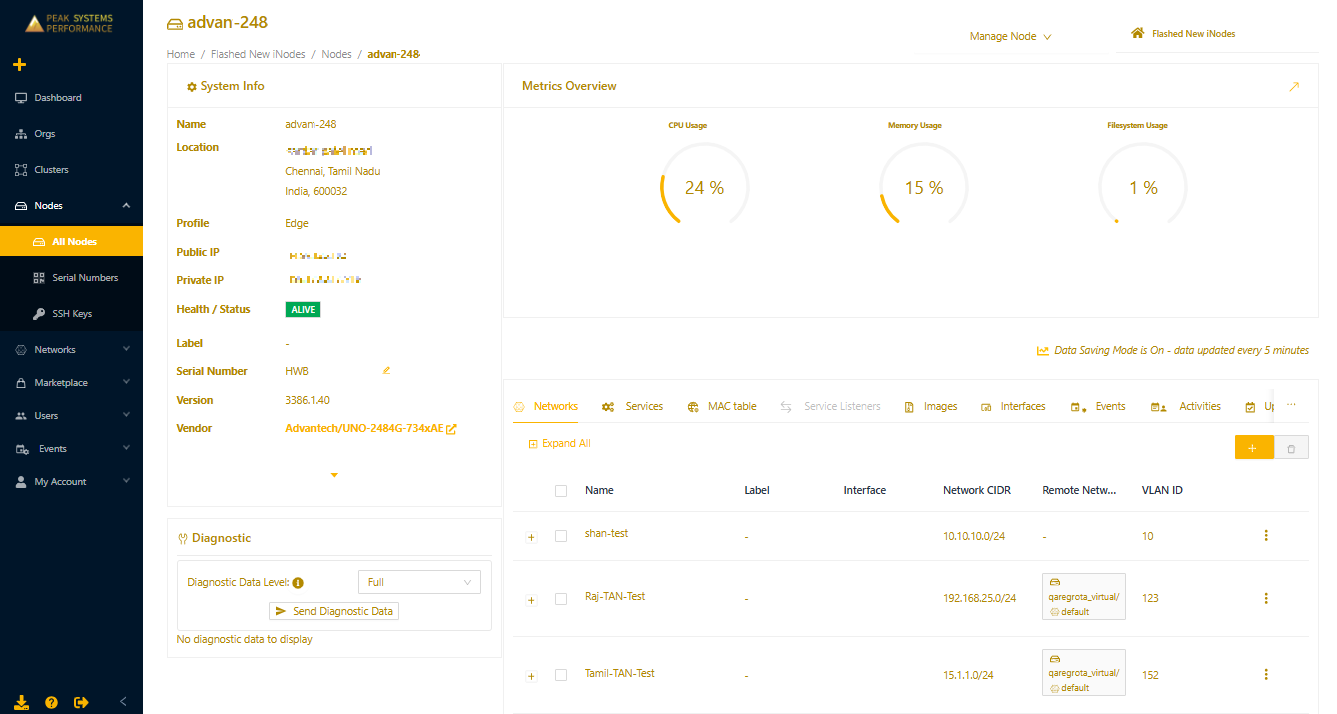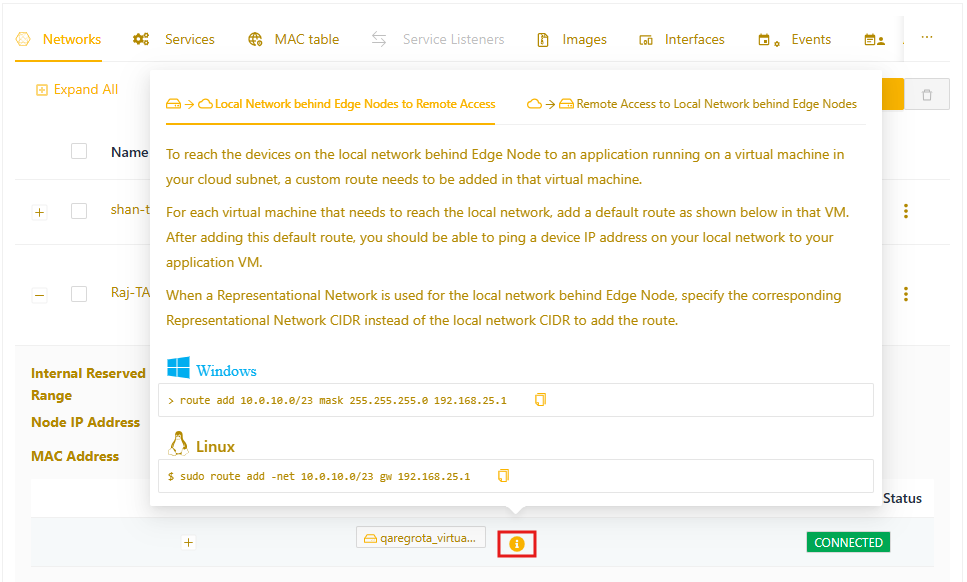Use the instructions in this article to allow application instances running in your cloud need to reach devices behind an Edge Node (formerly Edge iNode). This is an optional step. For this to work, the application instance must be in same virtual private cloud (VPC) network as the Cloud Connector (formerly Virtual iNode) instance.
To allow an application running on a virtual machine (VM) to access devices on the local network behind the Edge Node , you'll need to add a custom route in the VM:
- From the Nodes > All Nodes page, select the name of the Edge Node to open its details page.

- In the Networks tab, expand the remote network your local network connects to, and then hover over the info icon next to the remote network A help pop-up opens with instructions you can cut and paste to add a default route.

- Add a default route for each VM that needs to reach the local network. Once the route is added, you can ping a device IP address on your local network from your application VM.
Considerations:
- When a representational network (RepNet) is used for the local network behind Edge Node, use the RepNet CIDR instead of the local network CIDR to add the route.
- Routes added using the route add command do not persist across reboots. You'll need to add the route again when the application instance restarts.
- When more than one Edge Node is connected to a single Cloud Connector, you must add a default route through the Cloud Connector for each local network.